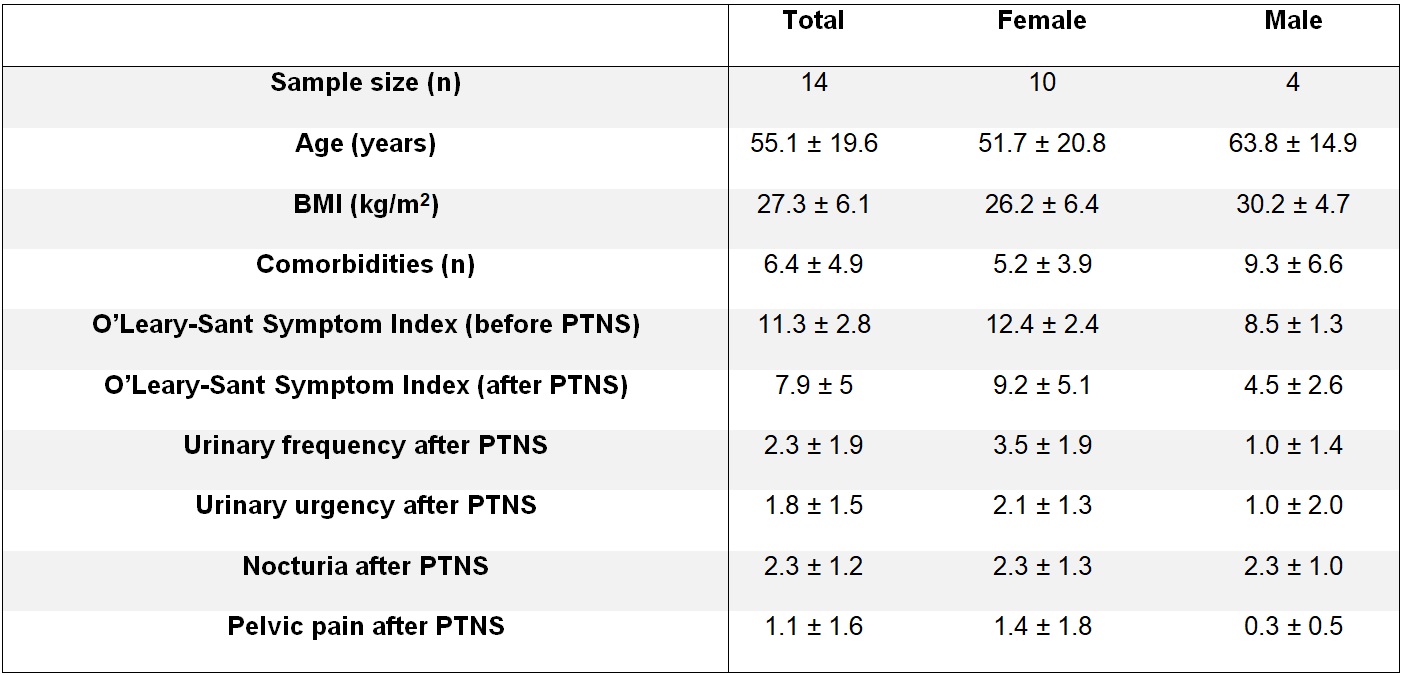Podium
PD08: Infections/Inflammation/Cystic Disease of the Genitourinary Tract: Interstitial Cystitis
-
AA
Podium Presenter(s)
Introduction: Our primary objective was to determine the efficacy of percutaneous tibial nerve stimulation (PTNS) in managing symptoms of patients with interstitial cystitis / bladder pain syndrome (IC/BPS). Secondary objective was to determine the magnitude of change in IC/BPS related lower urinary tract and pelvic symptoms (urinary frequency, urinary urgency, nocturia, pelvic pain).
Methods: Following IRB protocol approval, patient data were gathered using the STAnford Research data Repository (STARR) to identify patients with IC/BPS who underwent PTNS from January 2019 to October 2021. Direct chart review was performed to obtain any of the standardized outcome measures not contained in STARR. Lower urinary tract symptoms (LUTS) before starting PTNS therapy and after last PTNS visit, and percentage improvements in symptoms were quantified. Data are presented as mean ± standard deviation.
Results: A total of 14 patients (age 55.1 ± 19.6 yr, BMI 27.3 ± 6.1, medical comorbidities 6.4 ± 4.9) were analyzed according to the magnitude of response to PTNS (Table 1). LUTS before the initiation of therapy were recorded using the O’Leary Sant Symptom Index (frequency 3.4 ± 1.6, urgency 2.9 ± 1.5, nocturia 3.5 ± 1.2, pelvic pain 1.4 ± 1.4). Urgency improved the most with PTNS therapy (1.8 ± 1.5) with a mean percentage of improvement of 39%, followed by frequency (2.3 ± 1.9) with a mean improvement of 33.3%. Nocturia (2.3 ± 1.2) and pelvic pain (1.1 ± 1.6) were the symptoms least improved by PTNS, with a mean improvement of 32.4% and 21.1%, respectively.
Conclusions: PTNS can be a promising option for managing IC/BPS in patients who fail to respond to other lines of therapy. Future research is needed to understand the physiologic mechanisms which underpin the bladder centric versus central sensitization phenotypes of IC/BPS and identify novel neuromodulation modalities.
Source of Funding: None

.jpg)
.jpg)